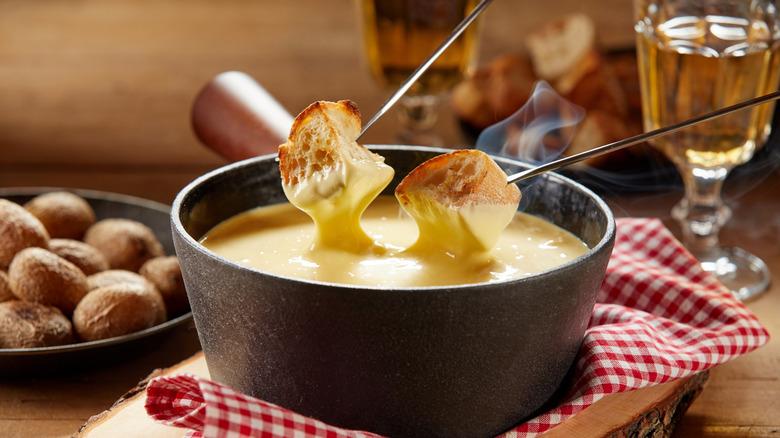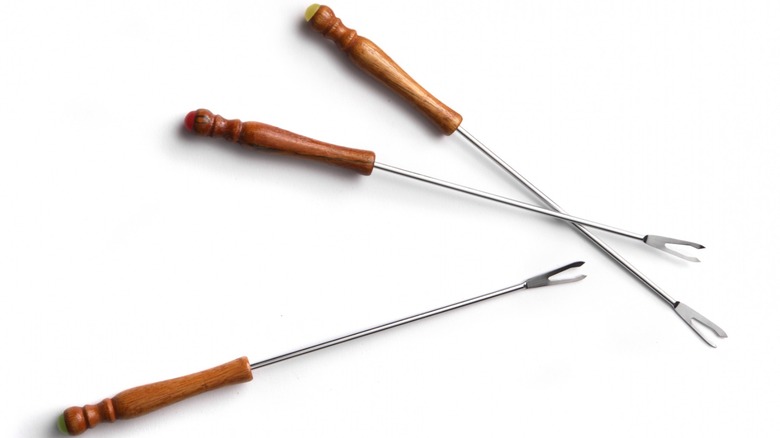The Fondue Etiquette Tip That Ensures An Enjoyable Dining Experience
Fondue is not without its fon-don'ts. Although it may seem like there's little more to the process than spearing, dipping, enjoying, and repeating, that's not entirely true. The steps do remain the same no matter what's warming in the pot, however, there's etiquette that must be followed to ensure the meal runs smoothly. For instance, while taking turns dipping or sharing ingredients is encouraged, other practices are strongly discouraged. As a result, it's best not to jeopardize the dining experience by making a faux pas such as eating directly from your fondue fork.
Fondue is all about sharing, which is why dining with the same fork you just twirled around in the communal melting pot is a no-go. A form of double-dipping, eating directly from a fondue fork isn't terribly hygienic, and it can even pose a health risk to your fellow dining companions. Since the utensils are repeatedly dunked into the pot, bacteria from saliva can be easily transferred between diners. Unsurprisingly, the threats associated with this germy exchange can put a damper on dining.
Additionally, eating from a fondue fork doesn't make the most sense on a practical level since food will be too hot to eat immediately. Not to mention that the long and lean utensils are even tricky to maneuver. Designed to prevent injury from bubbling hot cheese — but also oil, broth, or chocolate — the tools make for easy dipping, but difficult dining. Consequently, it's best to use fondue forks how they were intended.
How to use fondue forks, the right way
Ideally, fondue forks should be thought of as a serving tool, rather than a dining utensil. After piercing an ingredient and twirling it about in something like our homemade Swiss cheese fondue, chocolate, or whatever else, let any excess drip off before attempting to move the fork over to your plate. Resist the urge to stealthily tug food off the fork with just your front teeth. Instead, carefully slide the item off of the fondue fork onto your plate with the help of your dining fork, ensuring not to touch tines to avoid cross-contamination. Rest your fondue fork on your plate and dig in.
While you might know your way around a fondue fork (and the proper protocol for using one), assume that not every diner will, so it's worth a debrief before dipping and dunking. Set some ground rules with your dining companions — eating off a fondue fork may not be a big deal for some, but others might feel differently about swapping saliva, which is why it's important to discuss how to go about sharing fondue. In having these conversations, some of the stresses that come with communal dining can be alleviated, making for a more pleasant experience.
At the end of the day, because eating off of a fondue fork (much like double-dipping) tends to be frowned upon, it's best to keep fondue forks for dunking and regular forks for dining to guarantee the best dining experience for all.

